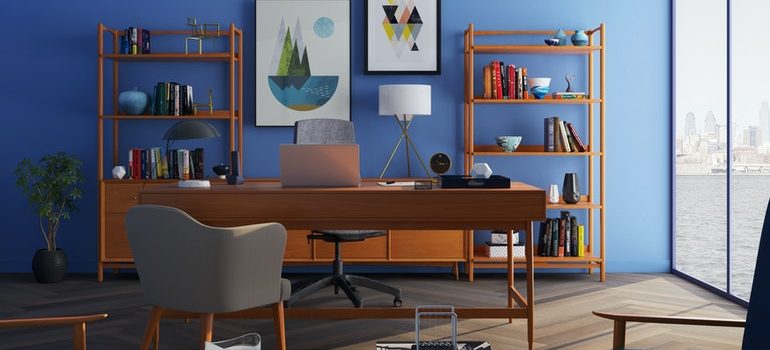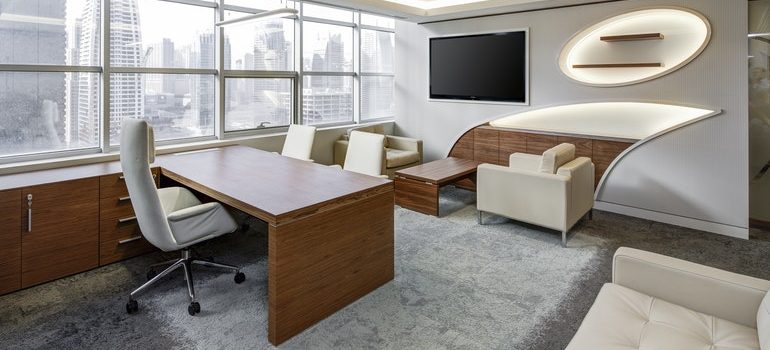Tips for storing office furniture
get a quote
Storing office furniture in Seattle requires careful planning due to the city’s climate, logistics, and office real estate trends. Here’s a comprehensive self storage Seattle guide to help you safely and efficiently store your office furniture, ensuring that it remains in good condition and is easy to retrieve when needed!
Proper preparation makes storing office furniture perfect
Seattle’s damp climate means moisture control is crucial. It would be best to have it to protect your furniture from humidity and temperature fluctuations, which could lead to warping, mildew, or mold growth. Be careful, especially if you’re storing items made of wood, leather, or fabric, which are more susceptible to damage from moisture.
Make sure the facility you choose has excellent security features, such as surveillance cameras, secure access, and individual unit alarms, to safeguard your valuable assets. Consider how accessible the unit is—whether it’s close to your office or a new location—and check if on-site staff are available to assist with any issues.

Prepare and disassemble furniture
Before you store your furniture in business storage Seattle recommends, thoroughly clean it and dry it. Dust, dirt, or moisture left on surfaces can cause deterioration over time. Disassemble large pieces like desks, bookshelves, and cubicles.
It saves space and minimizes the risk of damage during transport and while in storage. Keep screws, bolts, and other small parts in clearly labeled bags, ideally taped to the corresponding furniture, so you can easily reassemble them later.
Proper wrapping and protection
Use breathable covers, such as cotton sheets or blankets, instead of plastic, to protect your furniture from dust while allowing air circulation. Plastic covers, although commonly used, can trap moisture, which may lead to mold growth.
If you’re concerned about dampness, especially on the storage unit floor, place furniture on pallets or blocks to keep it off the ground. This provides an extra layer of protection against potential flooding or leaks
Maximize space efficiency
To maximize your storage space and keep items organized, stack strategically. Even if you’re using short term storage Seattle offers, place heavier and bulkier items like desks and filing cabinets on the bottom, and lighter, more fragile items on top. Leave enough space for aisles within your storage unit so you can easily access items without unpacking everything.

If you are storing office furniture for a long period, creating an inventory list is essential for organization and ease of retrieval. Here’s how you can do it effectively:
- Create a Master List: Document every item being stored. This list should include a description of each piece of furniture, such as a “black ergonomic office chair” or “wooden corner desk.”
- Assign Unique Labels: Label each piece or box with a unique identifier, such as a number or code. Use durable tags or stickers that won’t fade or peel over time.
- Categorize by Type or Room: Group items based on their type (e.g., desks, chairs, cabinets) or the room they came from (e.g., conference room, lobby). This will make it easier to unpack and arrange them later.
- Note Any Disassembly: For furniture that’s disassembled, ensure you record where the parts and small components, like screws and bolts, are stored. Label these parts and attach a note to the furniture on your list.
- Update Regularly: Keep your inventory list up-to-date, especially if you add or remove items from storage. This helps maintain an accurate record of everything you have.
This system ensures that when you need to retrieve or move items, you can quickly find exactly what you’re looking for without sifting through every box or piece.
Account for specific Seattle challenges
Seattle’s unique business environment, with its tech-heavy and frequently relocating companies, often leads to changes in office needs. If you’re planning a temporary office closure or downsizing, storing furniture might be part of a bigger transition. In such cases, ensure that your storage strategy is flexible enough to adapt to future office configurations, whether it involves reusing old furniture or integrating it into a new office design
Secure your furniture
Aside from selecting a secure Bellevue self storage facility, take additional measures like securing your furniture within the unit. Use straps to secure larger pieces, and store fragile items away from high-traffic areas within the unit to prevent them from being accidentally damaged during retrieval.

Consider insurance
While most reputable storage facilities in Seattle offer a degree of security, it’s wise to insure your stored furniture. Whether through the storage facility’s insurance offerings or a separate policy, insuring high-value items provides peace of mind against unexpected damage from natural disasters or other unforeseen incidents.
Plan for the long-term
If your storage needs extend for several months or even years, visit your unit periodically to inspect your furniture. Regular visits allow you to check for signs of deterioration, such as pests or moisture, and to rearrange items if necessary to prevent damage.
Furniture disposition and recycling
In case you’re storing office furniture with the intent to donate or recycle it later, make sure it’s stored in good condition to retain value. Many Seattle companies are now prioritizing sustainability, so consider partnering with organizations that manage furniture recycling programs. This way, you can ensure that your used furniture doesn’t end up in a landfill, especially when you plan to dispose of it after storage
Ensuring long-term preservation and accessibility of your office furniture
Storing office furniture in Seattle comes with unique challenges, from the city’s moist climate to fluctuating business needs. Selecting a reliable storage facility, properly preparing your furniture, and making efficient use of available space ensures office assets remain in excellent condition. Prioritize protection from moisture, maximize space, and remember to plan for both the short and long term when managing your storage needs.
